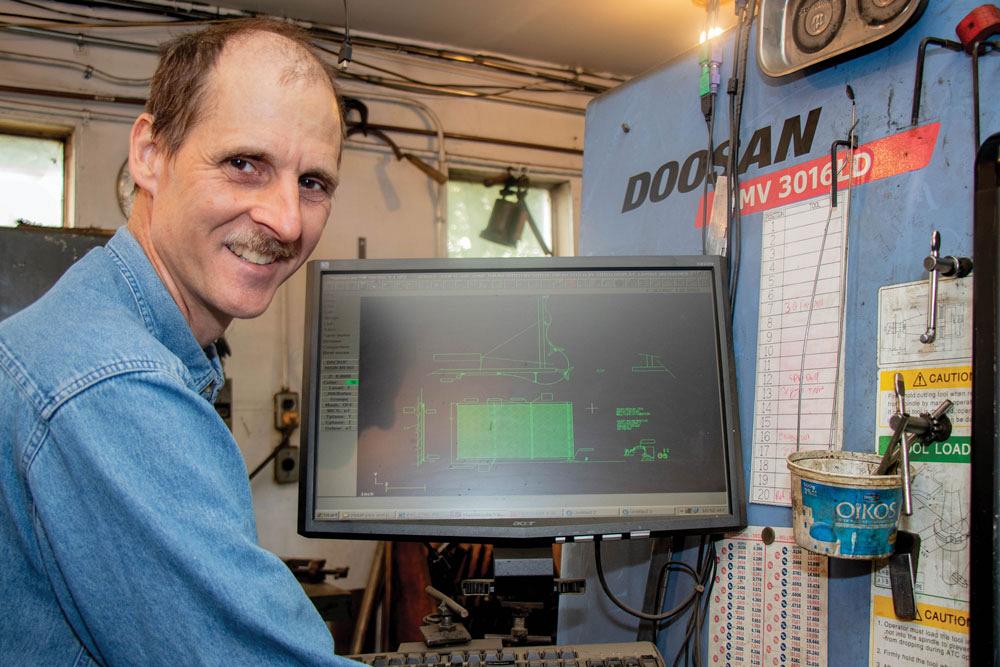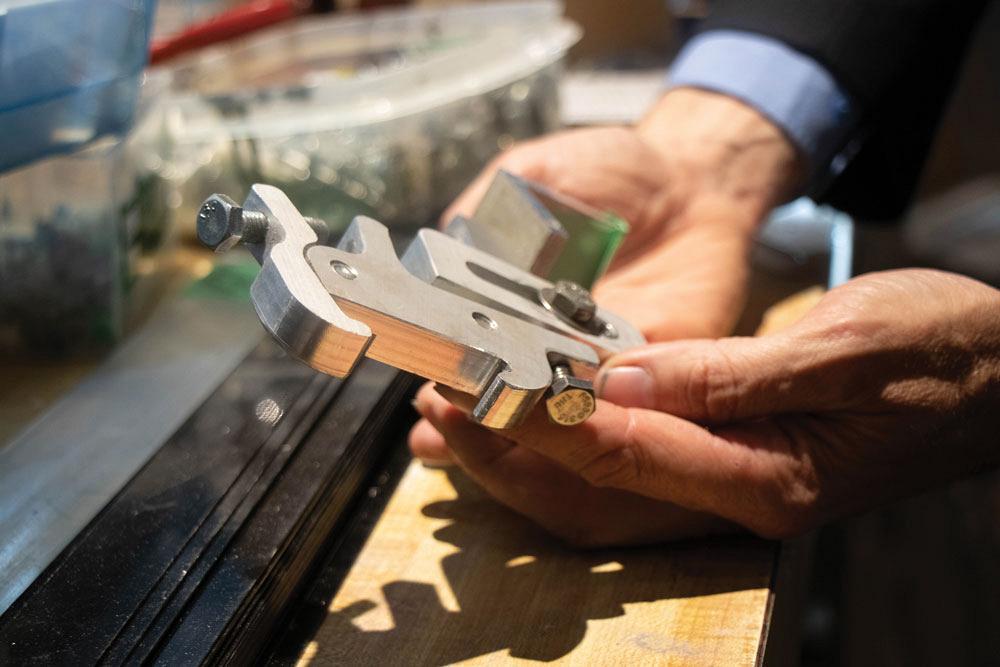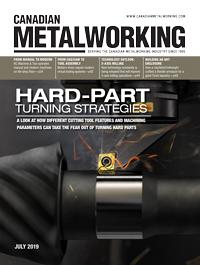- FMA
- The Fabricator
- FABTECH
- Canadian Metalworking
Building an art enclosure
How a machinist/millwright crafted a flexible armature for a giant Torah tapestry
- August 14, 2019
- Article
- Made In Canada
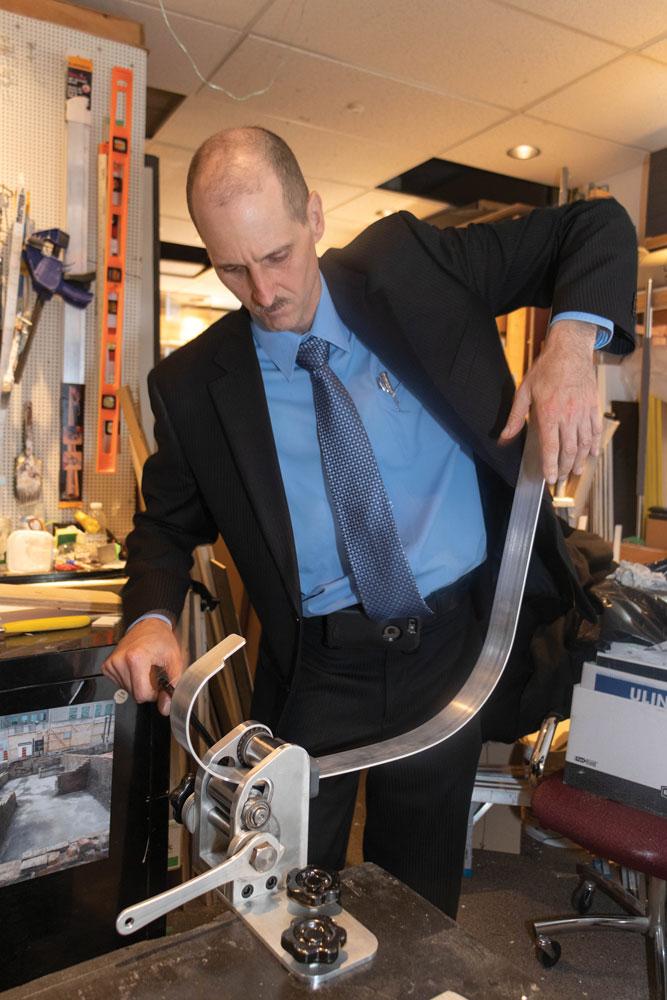
In the workshop at the Textile Museum of Canada, Gaudet demonstrates how his portable slip roller can curl and straighten the bars that hold up the tapestry.
Imagine you need to make a display armature that has to curve around rectilinear walls -- and also be portable, pliable, and beautiful. Not to mention, it may have to travel around the world someday.
The display piece showcases a larger-than-life, handmade tapestry of one of the most significant literary works in Western culture: the holiest book of Judaism.
Machinist and millwright Martin Gaudet, Bainsville, Ont., stepped up to the task of making the Torah Stitch by Stitch project look like a flowing, unravelled scroll at the Textile Museum of Canada in Toronto. About 1,500 people from all over the world contributed individual cross-stitched panels that were connected to make the 2 by 85-m tapestry.
The project’s creative director, Temma Gentles, got in touch with Gaudet after hearing about his work on another art piece, the Quilt of Belonging by Esther Bryan, which is on display in Lancaster, Ont.
Making display art
The original display concept was to make the tapestry curl around so that people could walk in and be surrounded by the words of the Torah; the designers wanted to make it an experience for the viewers, rather than a traditional display.
“They wanted it to be as if you would be inside of it,” Gaudet said. “The equivalent of going to a private place and meditating.”
However, it would take a gallery the size of a basketball court to accommodate the original design, and, as far as the curators knew, the possibility of creating an armature that could be bent and unbent onsite to match the gallery was out of the question.
Gaudet knew better.
“If you carefully manufacture all of these things [in] a traditional industrial way, the box is going to be huge. It’s going to cost a fortune,” Gaudet said.
He created a modular integration system for flexible installation, without the need to pre-engineer the forms.
“It would be a sculpture that could evolve on the spot,” Gaudet said.
Gaudet made an entire kit of parts that can be adapted for local conditions. He began the concept design using CAD modelling. Then after material flow experiments and type trials, he invented a clip which, in conjunction with the bars and wall brackets, is used to make six ranges of motion and can reach anywhere within a 40-cm radius.
“For example, if there’s no wall mounting, but you have one 6 in. to the left, then you can elect to use the brackets to come out and build in the orientations that you need,” Gaudet explained.
The production of the display piece involved CNC milling, turning, and plasma cutting; wire-fed gas metal arc welding with a parts manipulator; and an in-house anodizing process.
The materials Gaudet used for the piece were 6061-T6 and 3003 aluminum.
He also fabricated and designed a custom-purpose slip roller to manipulate the armature on-site, which he said was “fundamental in being able to produce the curves in situ as the [piece] was evolving at the museum.” The slip roller can be attached to the storage case, which holds all the materials needed to set up the display in modular cases.
“I made a complete work kit that has everything you need, including wrenches, all the pieces, and a lot of redundant pieces that we could mix and match as we wanted to without having to pre-design everything,” Gaudet said.
The artist and curators were thrilled with the results.
“Martin saw right from the get-go that it needed to be professional; it needed to be invented; it needed to be flexible and be hanging on walls; and be self-standing because each location would have to be differently configured,” Gentles said. “And he saw we wanted to maintain the idea of a journey.”
Though the exhibit at the textile museum is not the whole tapestry, it is unclear whether or not it will ever be displayed in its entirety. Gaudet’s armature weighs nearly 226 kg, and that’s only for about half of the final project.
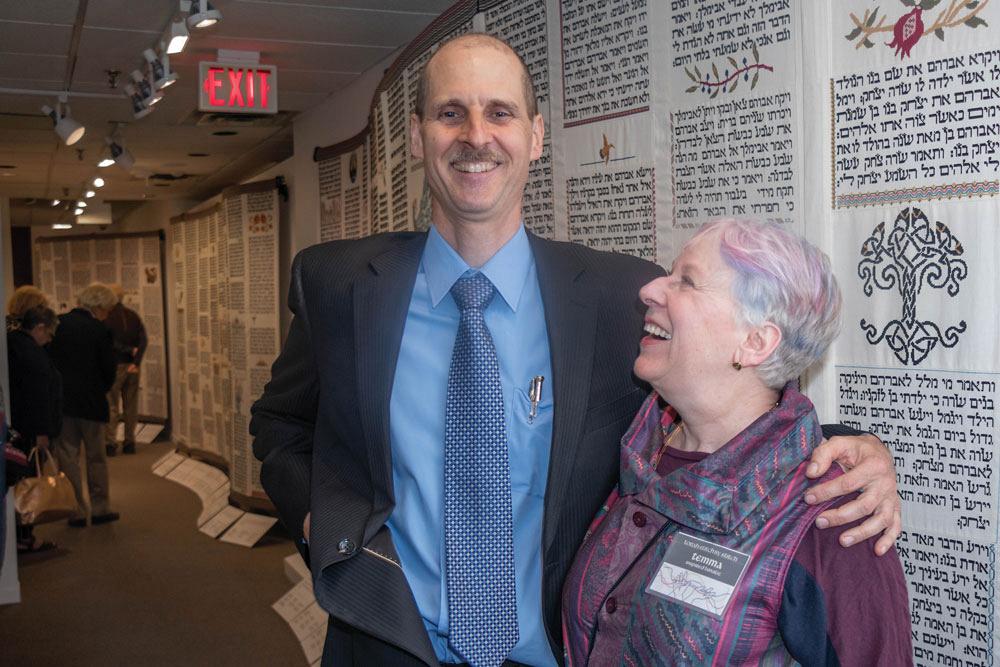
Gaudet and creative director of the Torah Stitch by Stitch project Temma Gentles stand in front of the tapestry hanging from Gaudet’s armature. The exhibit takes up almost the entire third floor of the Textile Museum of Canada.
The current version of the Torah Stitch by Stitch project can be seen at the Textile Museum of Canada until Nov. 17, 2019.
Contributing writer Shelby Thevenot can be reached at shelbythevenot@gmail.com.
All photos courtesy of Shelby Thevenot.
subscribe now


Keep up to date with the latest news, events, and technology for all things metal from our pair of monthly magazines written specifically for Canadian manufacturers!
Start Your Free Subscription- Trending Articles
Automating additive manufacturing

CTMA launches another round of Career-Ready program

Collet chuck provides accuracy in small diameter cutting

Sandvik Coromant hosts workforce development event empowering young women in manufacturing

GF Machining Solutions names managing director and head of market region North and Central Americas

- Industry Events
MME Winnipeg
- April 30, 2024
- Winnipeg, ON Canada
CTMA Economic Uncertainty: Helping You Navigate Windsor Seminar
- April 30, 2024
- Windsor, ON Canada
CTMA Economic Uncertainty: Helping You Navigate Kitchener Seminar
- May 2, 2024
- Kitchener, ON Canada
Automate 2024
- May 6 - 9, 2024
- Chicago, IL
ANCA Open House
- May 7 - 8, 2024
- Wixom, MI













